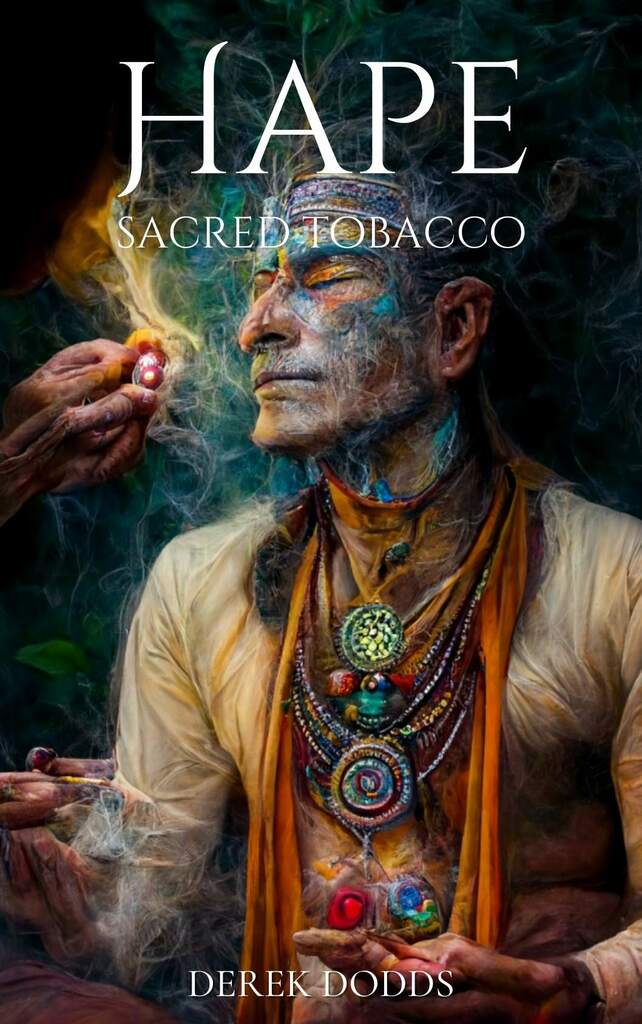Using 7 Chakras for Balance in Life: Hindu & Egyptian Wisdom
As we navigate our cosmic journey on Earth, our guide today will be the vibrant, spinning energy systems known as the chakras—used to ignite our energy by understanding how to use chakras for balance. A rich part of Hindu and Egyptian wisdom traditions, they’ve become a popular talking point in Western yoga and new-age philosophies. So grab your yoga mat, find a comfy spot, and dive into this fascinating, mystic world.
Spiritual movement is the development of the higher mind to carry one’s consciousness to discover truth rather than illusion. The most incredible illusion is that you are separate from the source. Thus, as we change the patterns of conditioned thoughts, we break away from our circular cyclical pattern of existence and enter into a spiral pattern of growth and transformation, as represented by the awakening of the coiled serpent, Kundalini. which brings us to the chakras—learning to use chakras for balance can help harmonize our lives.

Chakras For Balance
The term chakra, from Sanskrit, translates to “wheel” or “disk” and signifies spinning energy centers within our bodies. They are believed to be the nexus points where numerous nāḍīs (channels or meridians) intersect. In a nutshell, they’re akin to spiritual power stations, maintaining the energy flow within us. Let’s dive into each chakra’s meaning so we can use chakras for balance in our lives.
- Muladhara (Root Chakra): The Muladhara or Root Chakra is located at the base of the spine. As the first chakra, it sets the foundation for the other chakras. Thus, its meaning is “support” or “pillar.”
The Muladhara color is red, reflecting its role as a source of life force, vitality, courage, and survival instincts. A balanced Muladhara chakra manifests as solid willpower, persistence, and a feeling of security. The Muladhara is also the gateway to Kundalini energy and is where this serpentine energy manifests.
Color: Red
Sound: The root seed syllable is LAM, often chanted with drums. It resonates at a frequency of 432 Hz. - Svadhisthana (Sacral Chakra): The Sacral Chakra, known as Svadhisthana in Sanskrit, is situated in your lower abdomen—just below your belly button.
This chakra is related to creativity, sexual energy, and emotional expression. The associated color is orange, reflecting the energetic and passionate nature of these aspects of our lives. When this chakra is balanced, we feel a sense of control and pleasure in our lives.
Color: Orange
Sound: The seed syllable is VAM, played with the flute & woodwinds. The frequency of the sacral chakra is 480 Hz. - Manipura (Solar Plexus Chakra): The Solar Plexus Chakra, or Manipura, resides from the lower to the upper abdomen. This chakra is associated with self-worth, self-esteem, and confidence.
Yellow is associated with this chakra, reflecting the brightness and power of self-esteem and personal strength. A balanced Manipura chakra can lead to feelings of empowerment and self-assuredness.
Color: Yellow
Sound: The seed syllable is RAM, played with the harmonium & organ. It vibrates at a frequency of 528 Hz. - Anahata (Heart Chakra): The Heart Chakra, known as Anahata in Sanskrit, is located just above your heart in the center of your chest. This chakra empowers love, compassion, and emotional bonding with others.
Anahata is represented by green, indicating growth, healing, and love. When balanced, the heart chakra fosters feelings of love and compassion for oneself and others.
Color: Green
Sound: The seed syllable is YAM, played with the violin & strings. The heart chakra resonates at 594 Hz. - Vishuddha (Throat Chakra): The Throat Chakra, or Vishuddha, governs communication and expression. It’s situated in the throat region. The color associated with this chakra is blue, symbolizing communication, truth, and self-expression. When this chakra is balanced, it enables effective communication and expression of one’s truth.
Color: Blue
Sound: The seed syllable is HAM, played with horns. The frequency of the throat chakra is 672 Hz. - Ajna (Third Eye Chakra): The Third Eye Chakra, known as Ajna in Sanskrit, is located in the middle of the forehead, slightly above the space between the eyebrows.
Anja governs intuition, insight, and spiritual awareness. Its associated color is indigo, representing intuition, perception, and the ability to see beyond the physical realm. A balanced Ajna chakra leads to enhanced intuition, imagination, and wisdom.
Color: Indigo
Sound: The seed syllable is OM, played with the piano. This chakra resonates at a frequency of 720 Hz. - Sahasrara (Crown Chakra): The Crown Chakra, also known as Sahasrara, is situated at the crown of the head. It is concerned with universal consciousness and spiritual connection.
The color associated with this chakra is violet or white, representing spiritual enlightenment, cosmic consciousness, and connection with the universe. A balanced Sahasrara chakra can lead to feelings of bliss and spiritual connection.
Color: Violet or White
Sound: The seed syllable is AH, played with the conch shell. The crown chakra resonates at 768 Hz.

Chakras For Balance Journey Through Each Color
The colors assigned to each chakra are not arbitrary but match the vibrational frequencies of these energy centers. They significantly affect the mind, body, and spirit, just as colors affect our psychology and physiology.
Chakras of Egypt
Interestingly, the Egyptian tradition references similar energy systems. The ancient Egyptians had a sophisticated understanding of human energy systems, including the Ka (vital energy) and the Ba (the soul). Although the terminology varies, the underlying principles echo those of the Hindu chakra system.
While the concept of chakras as energy centers of the body is primarily associated with Hindu and Buddhist traditions, there have been attempts to connect this concept to Ancient Egyptian belief systems.
One potential parallel can be drawn from the concept of Ma’at in Ancient Egyptian religion. Ma’at is the concept of truth, balance, order, harmony, law, morality, and justice. She is also a goddess who personified these concepts. The balance and harmony are integral to Ma’at could be compared to the balance and alignment often associated with the chakra system in Hindu and Buddhist traditions.
Furthermore, the Ancient Egyptians had a profound understanding of the human anatomy and believed in the presence of spiritual and metaphysical aspects in the body. In some depictions, the pharaohs were shown to have a snake (usually a Uraeus, the symbol of power and divine authority) protruding from the forehead, similar to the Hindu god Shiva’s third eye, which is connected to the Ajna, or the sixth chakra, in the chakra system. This suggests a shared concept of a ‘higher’ or ‘inner’ sight or consciousness, thus using chakras for balance between each aspect of ourselves.

Chakras For Balance Through Inner Transformation
Chakra For Balance and Care
To keep these chakras spinning harmoniously, we can engage in many practices, including yoga, meditation, chakra cleansing, certain types of bodywork, and music.
Balancing and working with the chakras energetically involves a range of practices, including meditation, visualization, affirmations, and physical grounding exercises. Here’s how you can incorporate these practices for each chakra:
1. Root Chakra (Muladhara): As per Mindbodygreen, grounding exercises such as meditating in nature with bare feet on the earth can help balance the root chakra, which is associated with feelings of safety and stability. Affirmations can also be beneficial, for example, “I am safe. I am enough as I am.”
2. Sacral Chakra (Svadhisthana): This chakra is associated with connections to others, acceptance of change, and sexual energy. Techniques like visualization and using crystals like Carnelian can aid in balancing this chakra. An affirmation that could be used is, “I am in touch with my emotions, feelings, and sensations. I enjoy my sensuality and creativity.”
3. Solar Plexus Chakra (Manipura): Any imbalances in this chakra can manifest as issues in the stomach area. Meditation and breathwork are effective ways to balance this energy center. You can use the affirmation, “I am empowered to create the life of my dreams. I am in control of my destiny.”
4. Heart Chakra (Anahata): This chakra is associated with love and compassion. Techniques for balancing this chakra may involve heart-centered meditation and visualization practices. The corresponding affirmation is, “Love is the answer to everything in life, and I give and receive love unconditionally.”
5. Throat Chakra (Vishuddha): This chakra is associated with communication and expression. If it’s blocked, physical manifestations might be seen as throat discomfort. Chanting, singing, and affirmations like “I speak my truth freely and clearly. I allow others to have their truth” can help restore balance.”
6. Third Eye Chakra (Ajna): This chakra is related to intuition and insight. Practices like meditation focusing on the third eye and visualization can help balance it. The corresponding affirmation is, “I see myself and others clearly.”
7. Crown Chakra (Sahasrara): This is the highest chakra associated with spiritual connection. Meditating with the focus on the top of the head can help balance this chakra. You can use the affirmation, “I am connected to the divine. I am open to new ideas and experiences.”
Remember, chakra balancing involves a holistic approach to harmonizing the energy centers in your body. The specific techniques can vary based on personal comfort and effectiveness. Finding a routine and set of practices that best suit your needs and preferences is recommended.
So, there we have it, dear explorers of consciousness! That was a fun ride through the world of chakras. Remember, the balance of these energy centers is a lifelong journey, not a one-time event. So keep exploring, keep learning, and be gentle with yourselves.
Wishing you love, light, and beautifully balanced chakras as you traverse the landscape of The Seven Chakras: From India to Egypt. If you want to use some plant medicine to connect with your chakras, Hape is a beautiful ally in that journey.












0 Comment